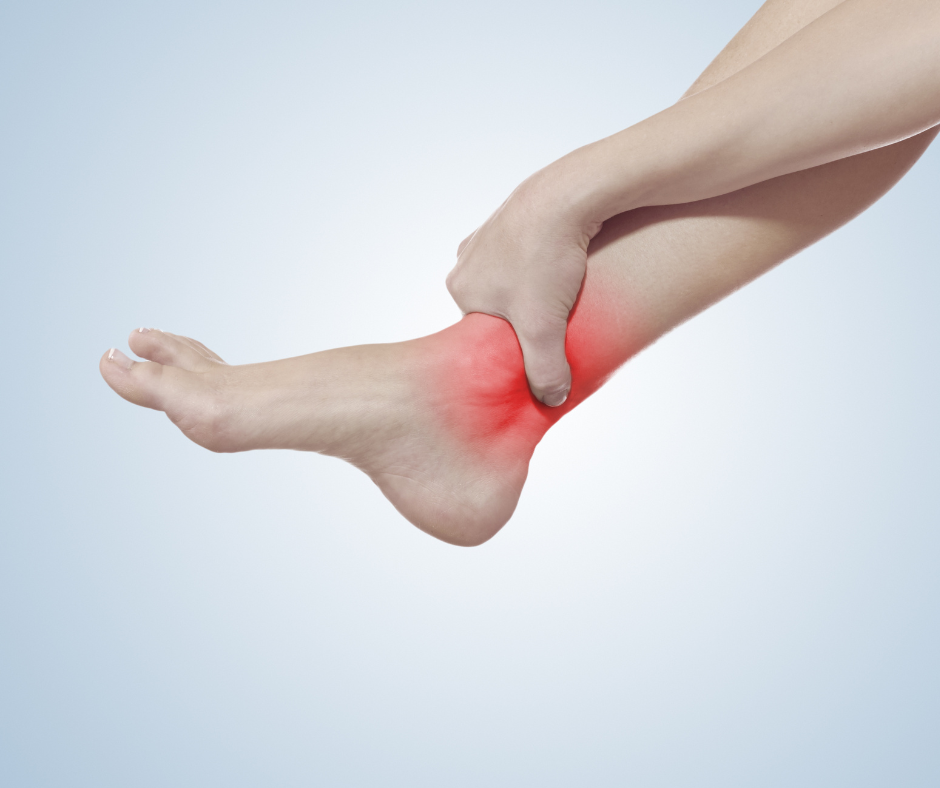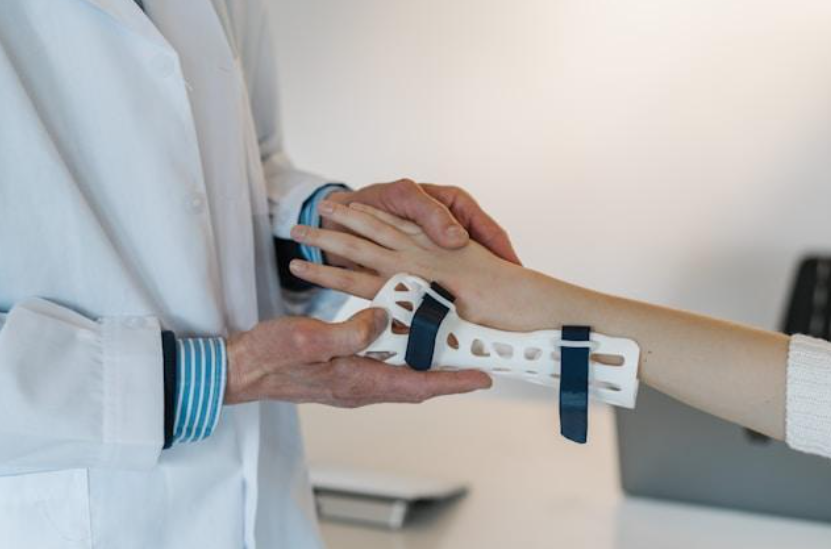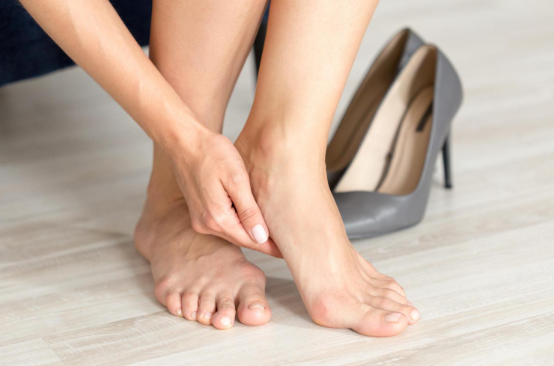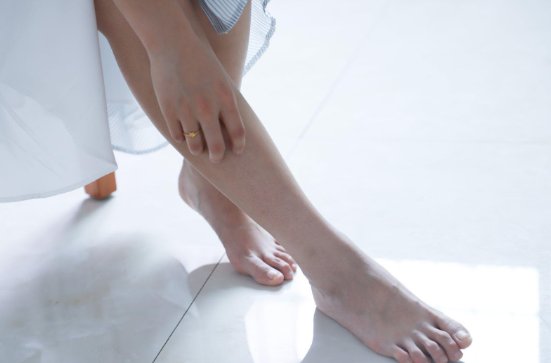UNDERSTANDING ANKLE ARTHRITIS & HOW TOTAL ANKLE REPLACEMENT CAN HELP
Understanding Ankle Arthritis and How Total Ankle Replacement Can Help

Ankle arthritis is a condition that causes pain, stiffness, and swelling in the ankle joint. It can significantly impact your mobility and daily activities. While there are non-surgical treatments available, for some individuals, total ankle replacement (TAR) surgery can be a life-changing option.
Here’s a comprehensive overview of ankle arthritis and the benefits of total ankle replacement.
What Is Ankle Arthritis?
The ankle joint is a complex structure that connects your lower leg (tibia and fibula) to your foot (talus). Smooth cartilage covers the ends of these bones, allowing them to glide over each other with minimal friction during movement. In ankle arthritis, this cartilage wears away, causing the bones to rub together. This friction leads to pain, inflammation, stiffness, and a gradual loss of joint mobility.
Common causes of ankle arthritis include:
- Osteoarthritis: This is the most common type, often caused by wear and tear due to aging or repetitive stress.
- Post-traumatic Arthritis: It develops after an ankle injury, such as a fracture, ligament tear, or dislocation.
- Inflammatory Arthritis: This is an autoimmune disease that can affect any joint, including the ankle.
Symptoms of Ankle Arthritis
The telltale signs of ankle arthritis can vary in severity but typically include:
- Pain: This is the most common symptom, often described as a dull ache or throbbing sensation that worsens with activity and weight-bearing.
- Stiffness: It becomes difficult to move your ankle freely, particularly in the morning or after periods of inactivity.
- Swelling: Fluid buildup around the joint can cause noticeable puffiness.
- Reduced Range of Motion: Difficulty flexing or pointing your foot.
- Grinding Sensation: A feeling of bones rubbing together during movement.
- Instability: A feeling of weakness or like your ankle might give way.
Non-Surgical Treatment Options for Ankle Arthritis
In the early stages of this condition, non-surgical treatments can often effectively manage pain and improve function. These may include the following:
Rest
Reducing activities that aggravate your ankle pain can allow for healing and inflammation reduction.
Medication
There are over-the-counter pain relievers, like ibuprofen and acetaminophen, that can be effective in managing pain. But if those aren't strong enough, your doctor can provide you with a prescription for something more powerful.
Physical Therapy
Exercise can strengthen the muscles around your ankle joint, improve flexibility, and reduce stiffness.
Orthotics
Custom-made shoe inserts can provide additional support and stability for the ankle.
Bracing
Bracing can help as a non-surgical treatment for ankle arthritis by providing support and stabilization to the joint, reducing pain, and improving mobility during daily activities.
Steroid Injections
Injections can temporarily reduce inflammation and pain in the joint.
Ice Therapy
Applying ice packs to the affected joint for 15-20 minutes several times a day can reduce swelling and pain.
These non-surgical approaches can significantly improve your quality of life. However, if these options fail to provide adequate relief, total ankle replacement surgery might be a viable solution.
What Is Total Ankle Replacement?
Total ankle replacement (TAR) is a surgical procedure where the damaged cartilage and bone surfaces in the ankle joint are replaced with artificial implants. The goal of TAR surgery is to:
- Reduce pain and inflammation
- Improve ankle joint mobility
- Enhance your ability to participate in daily activities
Advancements in implant design and surgical techniques have made TAR a more reliable and successful procedure.
Who Is a Candidate for Total Ankle Replacement?
Not everyone with ankle arthritis is a suitable candidate for TAR surgery. Your doctor will consider various factors before recommending this procedure, such as:
- The severity of your ankle arthritis pain and dysfunction
- Your overall health and activity level
- The quality of bone in your ankle joint
- The presence of any deformities in the ankle
During the consultation, your doctor will discuss your medical history, perform a physical examination, and order imaging tests (X-rays, CT scans) to assess your ankle joint and determine if TAR is the right option for you.
The Benefits of Total Ankle Replacement
In this procedure, the artificial components, typically made of metal and plastic, are designed to mimic the natural movement of the ankle joint. Here's how TAR can benefit you:
Preserve Ankle Motion
TAR allows for a more natural range of motion in the ankle compared to fusion, which restricts movement.
Improves Balance and Stability
A functioning ankle joint provides better balance and stability compared to a fused ankle.
Faster Recovery
Typically, recovery from TAR is faster than ankle fusion, allowing you to return to your daily routine sooner.
What to Expect with Total Ankle Replacement
This surgery typically involves an incision on the front of the ankle. The damaged cartilage and bone are removed, and the artificial components are implanted. The procedure can be performed with minimally invasive techniques for faster recovery.
Recovery after Total Ankle Replacement
Following surgery, physical therapy comes in, helping you regain strength, flexibility, and range of motion in your ankle. While complete recovery can take several weeks, most individuals experience significant pain relief and improved mobility after TAR surgery.
Final Words
Ankle arthritis can be a debilitating condition, but total ankle replacement offers a promising solution for regaining pain-free movement and improving your quality of life. If conservative treatments haven't helped, discuss your options with your doctor to determine if TAR is the right choice for you.
Don't let ankle arthritis slow you down. At AZ Ortho, our board-certified orthopedic surgeons specialize in total ankle replacement to restore your mobility and ease pain. Contact us today for a consultation in Scottsdale or the Phoenix area.










